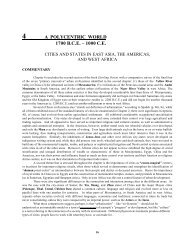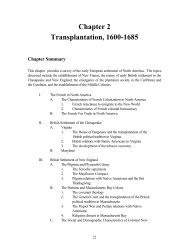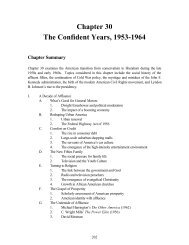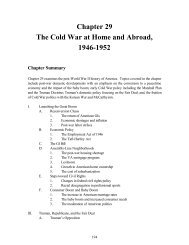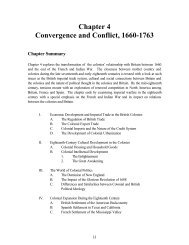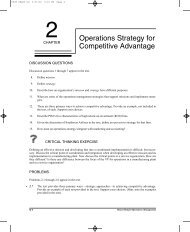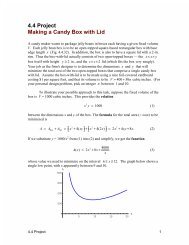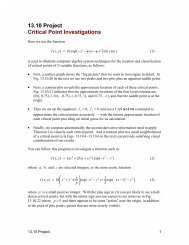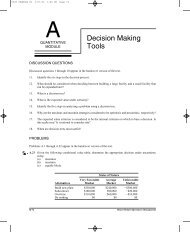14.6 Project Archimedes' Floating Paraboloid
14.6 Project Archimedes' Floating Paraboloid
14.6 Project Archimedes' Floating Paraboloid
You also want an ePaper? Increase the reach of your titles
YUMPU automatically turns print PDFs into web optimized ePapers that Google loves.
<strong>Archimedes'</strong> Way<br />
First we examine he elliptical top base of the segment. Looking at the figure above, we<br />
see that the endpoints of the ellipse's major axis are<br />
P1 = [0,-1,1];<br />
P2 = [0,2,4];<br />
Hence the center point of the ellipse is<br />
M = (P1 + P2)/2;<br />
Its major semiaxis<br />
has length<br />
MP2 = P2 - M;<br />
R = norm(MP2);<br />
The endpoints Q1 and Q2 of the minor axis have the same y- and z-coordinates<br />
yq = M(2);<br />
zq = M(3);<br />
as M, and x-coordinates determined by<br />
Hence<br />
xq = sqrt(zq - yq^2);<br />
Q1 = [-xq,yq,zq];<br />
Q2 = [xq,yq,zq];<br />
so the ellipse has minor semiaxis<br />
with length<br />
MQ2 = Q2 - M;<br />
r = norm(MQ2);<br />
Therefore, the area of the elliptical top base of the segment is<br />
A = pi*r*R<br />
A =<br />
9.9965<br />
<strong>14.6</strong> <strong>Project</strong> 15



